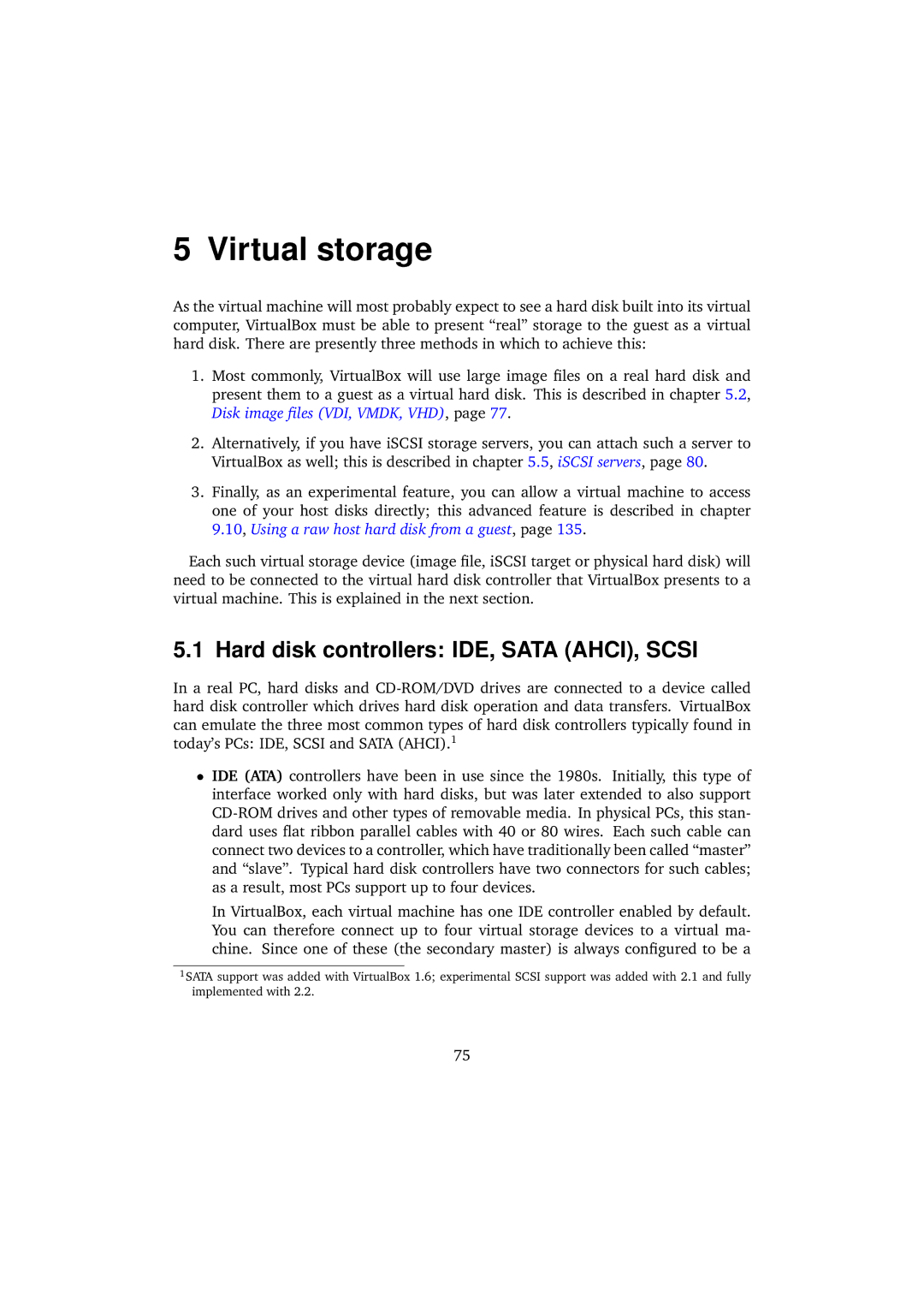5 Virtual storage
As the virtual machine will most probably expect to see a hard disk built into its virtual computer, VirtualBox must be able to present “real” storage to the guest as a virtual hard disk. There are presently three methods in which to achieve this:
1.Most commonly, VirtualBox will use large image files on a real hard disk and present them to a guest as a virtual hard disk. This is described in chapter 5.2, Disk image files (VDI, VMDK, VHD), page 77.
2.Alternatively, if you have iSCSI storage servers, you can attach such a server to VirtualBox as well; this is described in chapter 5.5, iSCSI servers, page 80.
3.Finally, as an experimental feature, you can allow a virtual machine to access one of your host disks directly; this advanced feature is described in chapter 9.10, Using a raw host hard disk from a guest, page 135.
Each such virtual storage device (image file, iSCSI target or physical hard disk) will need to be connected to the virtual hard disk controller that VirtualBox presents to a virtual machine. This is explained in the next section.
5.1 Hard disk controllers: IDE, SATA (AHCI), SCSI
In a real PC, hard disks and
•IDE (ATA) controllers have been in use since the 1980s. Initially, this type of interface worked only with hard disks, but was later extended to also support
In VirtualBox, each virtual machine has one IDE controller enabled by default. You can therefore connect up to four virtual storage devices to a virtual ma- chine. Since one of these (the secondary master) is always configured to be a
1SATA support was added with VirtualBox 1.6; experimental SCSI support was added with 2.1 and fully implemented with 2.2.
75
